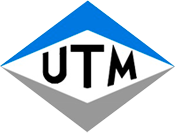- All
- Product Name
- Product Keyword
- Product Model
- Product Summary
- Product Description
- Multi Field Search
Views: 0 Author: Site Editor Publish Time: 2025-07-04 Origin: Site









Scaffolding safety warning tags are visual indicators attached to scaffolding structures to communicate critical safety information, hazards, or operational statuses. They are essential for preventing accidents by alerting workers, inspectors, and others to potential risks or specific instructions.
Purpose: Indicate whether the scaffolding has been inspected and is safe for use.
Common Types:
Green Tag: "SAFE FOR USE"—approved after inspection.
Red Tag: "DO NOT USE"—defective or unsafe, requires immediate repair.
Yellow Tag: "CAUTION" or "TEMPORARY"—pending re-inspection or limited use.

Purpose: Alert to specific risks (e.g., falling objects, electrical hazards).
Examples:
"FALL HAZARD—USE SAFETY HARNESS"
"ELECTRICAL DANGER—KEEP CLEAR"
"UNSTABLE STRUCTURE—AVOID CONTACT"
Purpose: Provide operational guidelines.
Examples:
"MAX LOAD: 500 kg PER SQUARE METER"
"NO UNAUTHORIZED MODIFICATIONS"
"ALWAYS USE TOE BOARDS AND GUARDRAILS"
Color Coding:
Red: Danger or prohibition.
Yellow: Warning or caution.
Green: Safety or approval.
Legibility:
Text must be bold, clear, and in high-contrast colors (e.g., black text on yellow background).
Font size should be large enough for easy reading from a distance (minimum 25 mm for text).
Durability:
Tags must be weather-resistant (waterproof, UV-resistant) and able to withstand harsh construction site conditions.
OSHA (U.S.): 29 CFR 1926.451 requires scaffolding to be inspected before use, with tags indicating inspection dates and results.
ISO 45001 (International): Emphasizes clear hazard communication through visual aids.
Local Regulations: Vary by country (e.g., UK’s Health and Safety Executive (HSE) has specific guidelines for scaffolding signage).
Strategic Locations:
At the entrance/access points to the scaffolding.
On each platform level.
Near defective or high-risk components (e.g., damaged planks, loose connections).
Adjacent to instructional signs (e.g., load limits, safety equipment requirements).

